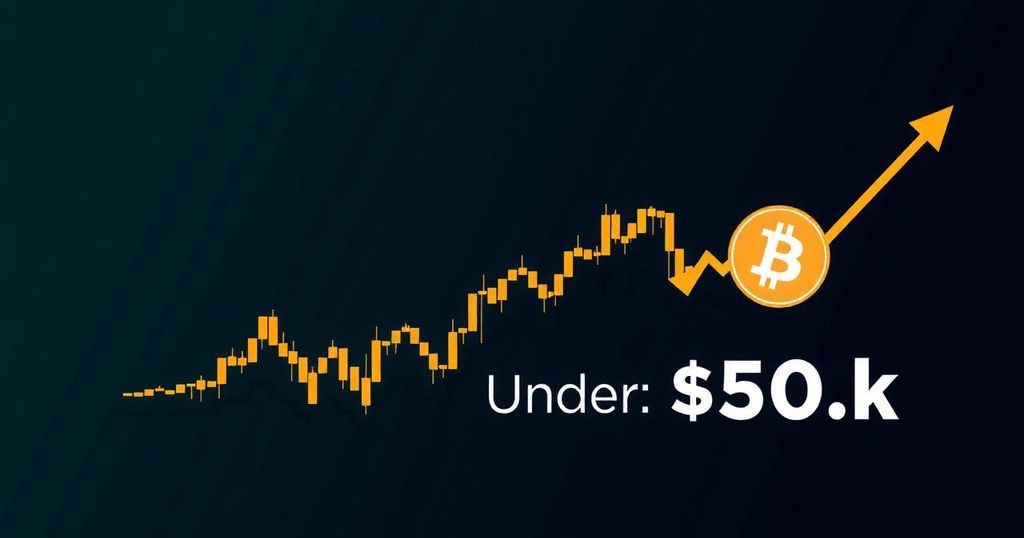An Analysis of Bitcoin’s Volatile Price Movements and Market Dynamics
Bitcoin has recently experienced a decline, resting under the $60,000 threshold, and analysts have proposed several factors that may explain this trend. A primary consideration is the outflow of funds from spot Bitcoin exchange-traded funds (ETFs), which some observers argue reflects diminished demand for the cryptocurrency. However, it is important to note that such data may be perceived as reactive; typically, traders become increasingly bearish following significant news events that alter their outlook. A critical aspect of Bitcoin’s price correction observed on August 29 was its correlation with fluctuations in the S&P 500 index.
One noteworthy development preceding this price movement was the substantial increase in the yield of 2-year U.S. Treasury bonds. After having fallen to 3.85%, marking the lowest level in over three weeks, these yields witnessed an abrupt rise to 3.90% on August 29. This shift indicated that investors were divesting from these securities in search of higher returns. A report from Zacks Research highlighted that the lack of investor confidence was fueled by uncertainty regarding Nvidia’s corporate earnings, which were announced after the market closed on the same date, as well as the anticipated U.S. Personal Consumption Expenditures (PCE) index for July, scheduled for release on August 30. At that time, concerns among investors revolved around the potential for high inflation figures to postpone anticipated cuts in interest rates by the central bank.
In a surprising response to the earnings release, Nvidia’s stock price fell to its lowest point in two weeks during after-hours trading, despite the company exceeding profit expectations. Furthermore, the PCE data saw a year-over-year increase of 2.6%, which somewhat alleviated investor concerns by renewing confidence that the U.S. Federal Reserve might consider loosening its stringent monetary policies aimed at controlling inflation.
Consequently, Bitcoin’s inability to maintain the $61,000 level on August 29 can largely be linked to the reservations expressed by traditional financial market participants, particularly those reliant on the growth of technology firms associated with artificial intelligence. Furthermore, the market has already factored in a 100% probability of an interest rate cut in September.
Analyzing Bitcoin through a broader lens reveals that, with a market capitalization of approximately $1.2 trillion, it ranks among the top ten global tradable assets, surpassing even prominent entities such as Berkshire Hathaway and TSMC, known as the largest semiconductor manufacturer. For context, Berkshire Hathaway registers annualized profits of $121 billion, implying that it could acquire the entirety of Bitcoin’s market capitalization with just a decade’s worth of net income. Notably, the conglomerate holds $277 billion in cash reserves, which is sufficient to purchase 4.61 million BTC at the $60,000 price point, equivalent to 23% of the circulating supply.
When further assessed in relation to base money, encompassing physical currency and bank reserves managed by commercial banks at their central banks, Bitcoin’s valuation aligns with that of the British pound. Thus, the remaining contenders for Bitcoin’s stature are the U.S. dollar, the euro, the Chinese yuan, and the Japanese yen.
Despite these favorable metrics suggesting Bitcoin ought not to remain below the $60,000 mark, it appears that traders may be critically evaluating the current rate of adoption, particularly with respect to the size of the Bitcoin ETF market and the functional use of Bitcoin’s network as a settlement layer. Presently, investors seem to be prioritizing technological growth alongside the relative stability of leading global economies. Nonetheless, it is essential to acknowledge that this prevailing sentiment is susceptible to change, potentially redeploying capital toward Bitcoin in the future.








Post Comment